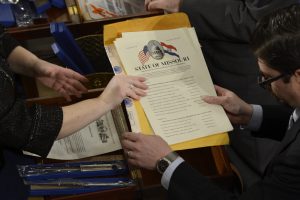
Washington, Nov 2 (EFE).- While Democrat Hillary Clinton and Republican Donald Trump campaign to win over voters, the final say on who will become the 45th president of the United States belongs to an institution that has no parallel in other democratic nations: the Electoral College.
The 538 electors representing the 50 states and the District of Columbia cast their ballots in accord with the popular vote in their respective jurisdictions, yet it is possible for a candidate to get the most votes nationwide and lose the contest.
A candidate needs 270 electoral votes to win.
The leaders who gathered in 1787 to draft the U.S. Constitution devised the Electoral College as a way of ensuring that states with small populations would have influence over the choice of the head of state.
Each state’s number of electors is equal to that of its members of Congress.
Though the allotment of members of the House of Representatives is based on population, every state has two senators.
The District of Columbia has three electors, corresponding to its three non-voting congressional delegates.
California leads all states with 55 electoral votes, followed by Texas, 38; Florida and New York, both with 29 votes; Pennsylvania and Illinois, with 20 electoral votes apiece; and Ohio, 18.
Maine and Nebraska divide their electoral votes proportionately among the candidates, but the other 48 states award them on the basis of winner take all.
The popular vote and the Electoral College result have diverged on four occasions during the past 229 years, most recently in 2000, when Republican George W. Bush became president despite having lost to Democrat Al Gore by some 500,000 votes.
In the case of a tie in the Electoral College, the election outcome is decided by the House of Representatives, where each state delegation has a single vote.
The last time an election was thrown into the House was 1825.
